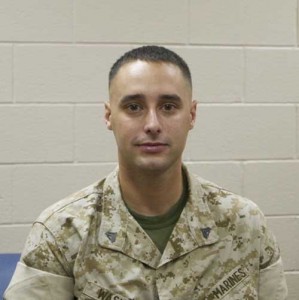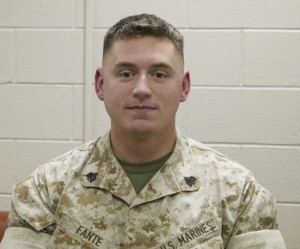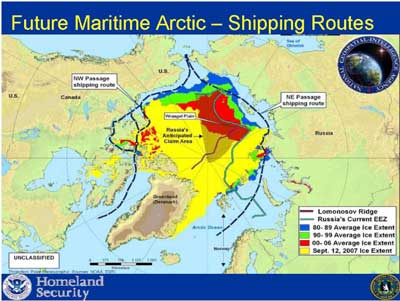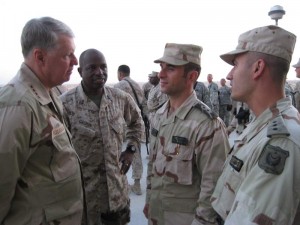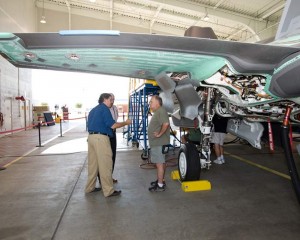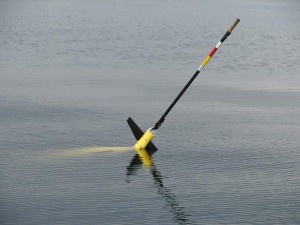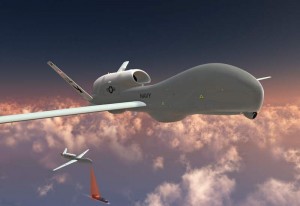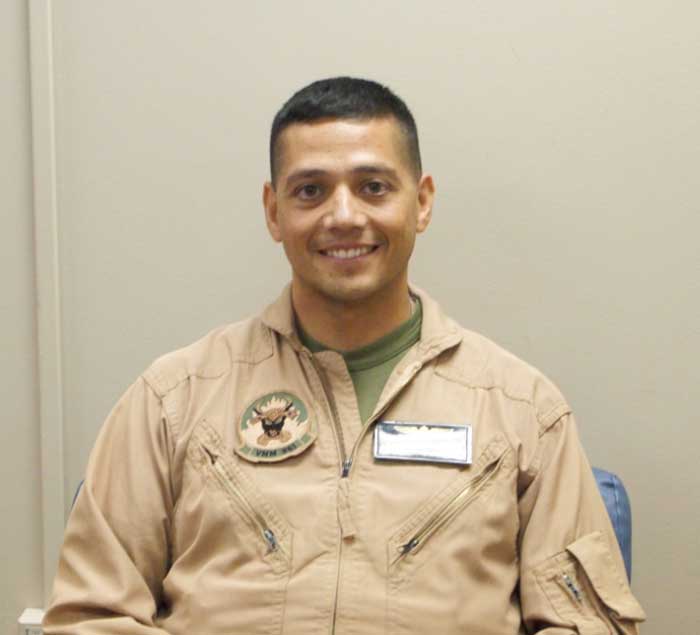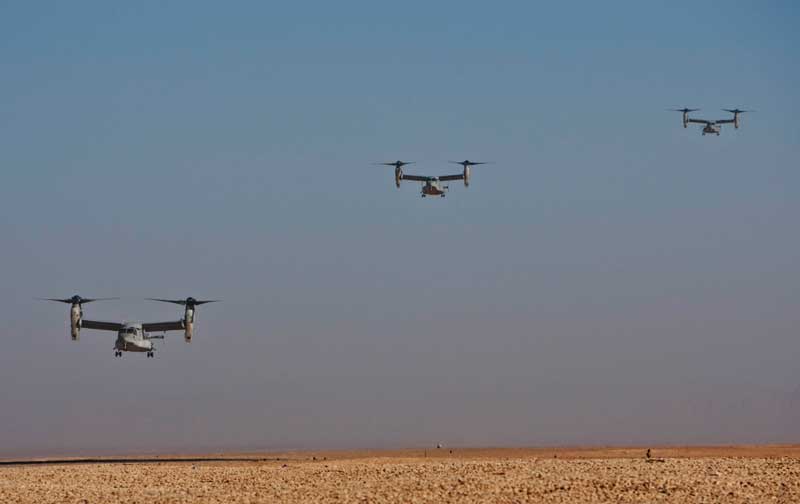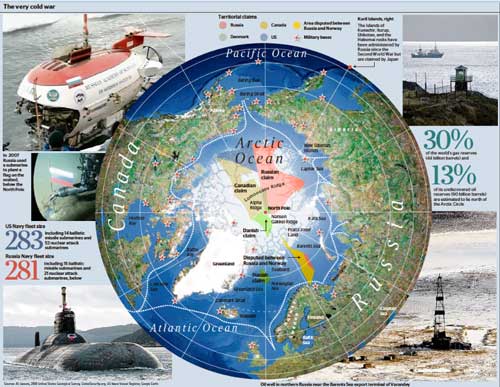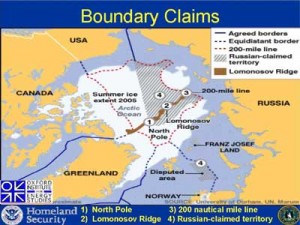An Interview With Colonel Arthur Tomassetti
11/18/2010 – In October 2010, Second Line of Defense visited the F-35 training facility located at Eglin AFB. This is a return visit with the first report emanating from a January 2010 visit. This report provides an update on progress at the training facility, as the planes prepare to come to Eglin. SLD sat down with Colonel Arthur Tomassetti (Turbo) who is the vice commander of the 33rd Fighter Wing which serves as the home to the Joint Strike Fighter Integrated Training Center, providing pilot and maintenance training for nine international partners.
SLD: What progress have you been making as the planes will be coming later than originally anticipated?
Colonel Tomassetti: We have made good progress on our building and our infrastructure and so far, for all the things that we can actually control, we are tracking along reasonably well.
SLD: Could you describe the layout of the campus?
Colonel Tomassetti: This is the map (shown in the slide show) that shows basically our world here; the flight line side and the campus side, and what’s starting to come to fruition now, these things that we used to call “new buildings,” highlighted in white, are actually real. You can walk inside. In fact, just last week we relaxed the, “hardhats required” rule for the Academic Training Center (ATC). So they’re starting to become real. We start putting furniture in those buildings, within the next couple of weeks. The building refurbishments have turned out to be a little bit of a challenge. New construction is straightforward; you tell somebody what you want; they build according to a diagram and it all works. The refurbishments though, it seems like every time we pull down a ceiling tile or a wall, we’re finding things we didn’t expect.
SLD: And these buildings are 40 years old?
Colonel Tomassetti: Yes, they’ve been around since the late 40’s and we actually have to spend a little bit more time, tweaking those and adjusting those, more so than we originally thought.
SLD: With regard to the foreign partners, after they buy planes can they join the Integrated Training Center?
Colonel Tomassetti: What we would expect to follow, shortly after an airplane agreement, is the discussion of “What part of this training operating do they want to buy?” as well; Do they want to buy pilot training here at Eglin? Do they want to buy maintenance training here at Eglin? Do they want to buy Lockheed support, in home country for some period of time, until they’re up running?
SLD: They’re different packages and different options for the partners?
Colonel Tomassetti: Foreign partners are being allowed to answer the questions for themselves: “Okay, decide what you want.” This place is open right now for all possibilities since we have to have the capability to train pilots and maintainers for all three F-35 variants regardless.
SLD: Presumably, in a financially constrained environment, being able to leverage common assets is important. Plus the fact of trying to figure out how to do joint CONOPS from the beginning is also important.
Colonel Tomassetti: Absolutely. Some of the other details that we’re starting to confront now are specific startup challenges. For example, “Okay, you’ve built this dining facility; you have your first student showing up next year.” Well, in that first class of students there’s only about 30 people in the first class for maintenance training. Do you open up that dining facility that has the capacity to feed 600 people, just for those 30 people? Do you put those 30 people in the dorm that’s ready to hold 250 people? If you put somebody in there, you’ve got to turn on the power, turn on the TV’s, turn all that stuff on.
So we’re starting to face some of those issues and work the realities of the, “What does it really mean to stand up the campus, and how do we go about doing that?” The task is to include complexities of, “How are you going to logistically move people from one point to another? Where are you expecting them to walk? Where do you have to provide transportation?” To, “How are you sharing the utility bills, and those things, amongst the people who are using the facilities?” So, we’re starting to put all of the details into the plan of getting the campus up and running.
We look to what’s going on, on the airfield. You’ll notice, probably much different from when you were here last time, there’s a lot of clearing of trees and everything, going on. Basically, what we’re trying to accommodate now is this parking apron that goes in front of the Navy and Marine Corp hangar, this addition to the taxiways, the large aircraft loading area and last chance checks area. Across the taxiway, there are 2 hover pads so that the STOVL airplanes can perform their vertical landings, here at Eglin main.
All that construction is under way up at Duke field, which is one of the outlying fields that we will use; basically, we’re setting up an LHA dummy deck, which is similar to what sits at the field near Cherry Point and the field near Yuma, Arizona, that currently, the Harrier pilots use to practice shipboard operations, before actually going out to a ship.
So basically, you take the top of a LHA/LHD, you lay it on the ground, and people can operate their airplanes, on approach to landing, and on takeoff. There is a tower set up, so the landing signal officer has the right perspective to view the airplanes, to control the approaches and takeoffs; and it gives the airplane the right perspective of things to look for, when operating in a shipboard environment. So that’s being put into place up at Duke Field. It should be up and operational by mid-summer of next year.
SLD: So you are preparing the infrastructure for a standup capability when the planes arrive?
Colonel Tomassetti: Right. We have a number of pilots and maintainers to produce; so, we aim to produce to that number. What gets done with them after they are trained is actually outside of our scope. We’re sensitive to what people are going to do with those groups of trained pilots and maintainers, but again, at the end of the day, we produce a certain number. We produce a certain number of pilots and maintainers, on the timeline that we’re asked, and to the level of training that is capable at the time, and then the Services take it from there.
Eventually somewhere, down the road – and again, we think this is probably in the 2015/2016 time frame – when we are performing sustained production, the services will shape their demand equation. The services will come to us with something that will look like a fairly repetitive, recurring requirement of, this many pilots per year, this many maintainers per year.
SLD: Currently you are creating the infrastructure, and doing an initial flow-through with some folks and after that as planes get married, mated to the training process, and the services make a determination on what their real training requirements are, then you can take the work on the infrastructure, and the initial training efforts, and then build a realistic business plan?
Colonel Tomassetti: Absolutely. I think what we’ll find is that folks will look to leverage what we’re doing here at Eglin, against what will happen at the other pilot training centers cross the U.S. Right now, no one has said anything about any other maintenance training centers for F-35, but anybody who is going to set up a F-35 training school, wherever that may be, in the beginning, the only reference point they’ll have is what’s happening here at Eglin. So our thought is that we will establish the template for other pilot training facilities for the F-35.
SLD: What might the number of pilot training facilities for F-35?
Colonel Tomassetti: As an example, we’ll have one Air Force squadron here; the Air Force, when it looks at the numbers it needs on that green side of that scale and the sustained production timeline, they see a need for up to 13 training squadrons for the pilots. But what would be nice if all 13 looked the same and were built on the same basic model.
SLD: What does “ready for training” mean?
Colonel Tomassetti: We’ve gotten a lot smarter over the summer about how to answer that question. We now have certain processes in place that we didn’t have before. We actually have hardware here now. We have our first simulator here now. We have our first classroom up and running for pilots. So, a lot of the time up to now has been spent on making sure that the facilities are up and running; and that stuff really is pretty much starting to become less of a concern. Yes, we have to go in and make sure the new construction was built right and we have to go validate everything that’s under warranty works, and those kinds of things, but that’s pretty easy.
Just by nature of putting people in those facilities, we’ll find out what works or doesn’t work. But the equipment and processes part of training is challenging, because everything about this Weapon System is new. It’s new down to the pilot’s flying gear, and in the pilot’s flying gear, it’s new down to the stuff that you can see and the stuff that you can’t see.
We can’t just take something we have, from legacy, things we’ve been using for however many years and apply it, necessarily, to F-35. We’re actually starting with new stuff and in some cases, with blank sheets of paper. We have to understand the ALIS computer system that is really the core of what happens in F-35. We have one simulator here; now that we’re starting to get a good understanding of what it can do, how we can best use it for training, and we’ll start to get some of the desktop trainers in, for the maintainers here in December. Our first pieces of flying gear are arriving. All of the pilots who are here today have been fitted, and bits and pieces of their equipment are starting to arrive. They can actually get it, go try it on, play with it, make sure it’s actually exactly the right size and everything; and then, again, we’re waiting on the airplanes as the last piece to arrive.
SLD: And again these are joint processes you are working on?
Colonel Tomassetti: The processes, again, are another challenge because this is one where, if left to their own devices, each individual service could do this very well. They could develop a syllabus for pilots and maintainers. They could develop ways that you do maintenance on the airplane and the procedures that you follow; because they would just apply what they do in their legacy airplanes, add in the F-35 differences, and go forward. Well, that’s great if we were going to train in isolation, and not take advantage of the commonality that the weapon system has, and not take advantage of being co-located here at Eglin.
I’m not sure that this is completely a done deal. We keep striving towards an integrated training approach and taking advantage of the commonality, but there’s still resistance to that. It’s still much easier, in some people’s minds, to just do things the way they’ve always done it. That would mean stay in an isolated way of doing things, yes you’re co-located but you don’t interact, sort of mindset.
SLD: The core advantage of integration is crucial to the program and to the savings inherent in co-located training facilities.
Colonel Tomassetti: Right and there is so much potential that comes from integration that’s more than just saving money. It’s the potential interaction of students at this early level in their career with this new weapon system and all of the ideas that can come from that.
For organizations that are going to go fight jointly wherever we go, why on earth would we not choose to start the training process off with a joint and coalition setup. We will look for new opportunities to get cross-service interaction. We will look for new opportunities to get some cross-service buy-in and we start small; and we can find one thing that commonality allows us to do with this airplane that legacy airplanes, as an example, wouldn’t allow us to do. Then we can argue “Hey, would you all be in agreement if we did this very small thing the same way?” and you start with something small and people agree, yes, and then you can build on that foundation. As we have communicated to anyone who will listen, we believe that interoperability could start here at Eglin. Take advantage of the weapon system commonality and adopt best practices available to us. The interoperability that we want on the battlefield of tomorrow or in the disaster relief response of tomorrow, that interoperability could begin here with integrated F-35 training.
The interoperability that we want on the battlefield of tomorrow or in the disaster relief response of tomorrow, that interoperability could begin here with integrated F-35 training.
SLD: I assume you can bring in aircraft asap for the maintainers?
Colonel Tomassetti: At whatever point aircraft can be brought to Eglin, we have to ask “What is the minimum kind of airplane you could have to start some basic training.” What we tell people is, okay, even if the airplanes can’t do pilot training, if you put them here at Eglin, we’ll start doing maintenance training on them because the maintainers have to touch those airplanes for their training as well. We suggest that “Go ahead and give us the airplanes,” and we’ll let the maintainers go out there, and they’ll do practice refueling, and they’ll practice removing and replacing panels, etc. We can start building those maintainers that will have to go out and take care of these airplanes wherever they go. We expect to train about 100 pilots a year, here at Eglin, when we’re up and running. We expect to train close to 2,000 maintainers a year, when we’re up and running. Getting a start on either one of those requirements will be beneficial.
SLD: And you might end up as the only maintenance center?
Colonel Tomassetti: Right now, that’s the plan.
SLD: What has happened since July with regard to the facility?
Colonel Tomassetti: Basically, in July, we had in place for the first time, a simulator and a classroom, and the initial versions of the flight syllabus. We decided to examine how those individual pieces function and how they might work together. We started what we called, “Small Group Trials.” We put a few pilots in the classroom. We started them on day one, with class one of the syllabuses and said, “Go through and let’s see what we find out.” And we looked at everything from, how long does it take you to login to the system? When you login to the system, how long does it take you to get to the first class? When you bring up that first class, are all of the words spelled correctly? We looked at everything from the minutia to the really important.
We looked at that whole first syllabus, about 40 academic classes, including instructor led classes and the self-paced learning.
Then we worked “Day in the Life Exercises,” where we started and pretended it was three o’clock in the afternoon on Wednesday and we were faced with the challenge of putting the flight schedule for the next day together; and the training schedule for the next day together. Okay, how are we going to process it? How are we going to distribute it to all the folks that need to get a copy of it? That night, when the student needs to check what they’re doing the next day, how are they going to call and check what they have on the schedule? How are they going to get their copy of that? How are they going to study for what they have the next day? When they show up the next morning and they go to their classroom, how are we sequencing which classes are going on in which classrooms? How are we sequencing students, for example, going from a classroom to a simulator?”
We looked at those, day in the life exercises, with all those pieces and parts that we had in place, and we had done the validation on to see how it fit together, and we learned a lot. And the goal is we’ll keep doing that.
As new pieces of equipment arrive and new processes get signed off or put into place, we’ll do that demonstration/validation on them. We’ll gather large portions of the subsystems and put them together in those day in the life exercises, and hopefully, when we have everything in place, before the airplanes arrive, we’ll be able to run (sitting at a table, or sitting in the classroom, or in the training room) those day in the life exercises for a normal day, here at Eglin. And once we get really good at the normal day, then we’re going to inject the not so normal days.
We’re going to inject the days where we have a tornado warning. We’re going to inject the days where we have an aircraft incident, and we’re going to do the easy, non-normal days, and we’re going to do the hard, non-normal days. What happens when we have a foreign pilot flying a U.S. airplane that hits or collides with another airplane in the airspace and the wreckage, as a worst-case-example, goes down somewhere out in town.
The different safety systems that get in play, the different mishap reporting systems that get brought into play, the different embassy contacts that have to be made, everything you can imagine for the ultimate worst day here and we’ll make sure that we can do that sitting around the table knowing how it’s going to work and hoping that that event never really occurs, real time.
SLD: So you are shaping the operational concepts and approaches that you’re going to use, day one?
Colonel Tomassetti: Absolutely, because we want to be able to hit the ground running on day one when the airplanes arrive.
Eglin will be unique. It’ll be the only place where you can see pilots and maintainers training on all three versions of the airplane, from both the U.S. and all the partners who are buying the airplane right now. Our goal remains to take advantage of the commonality that exists in this weapon system.
Eglin will be unique. It’ll be the only place where you can see pilots and maintainers training on all three versions of the airplane, from both the U.S. and all the partners who are buying the airplane right now. Our goal remains to take advantage of the commonality that exists in this weapon system.
It seems to us to be foolish to set up, as an example, on any given day, airplane class teaching aircraft refueling, and we have to set up three different classrooms. We have to have an Air Force classroom, where there’s an airman standing in front of airmen, teaching; and a Marine classroom where there’s a Marine standing in front of Marines, teaching; and a Navy classroom where there is a Sailor standing in front of Sailors teaching. All teaching a process that is done the same exact way on all three F-35 variants.
And imagine, in each of those classes, there’s three empty seats because you don’t have enough people who need that class that day. How horribly inefficient would that be if that’s the way we went forward, and what a waste of resources it would be if that’s the way we have to go forward. But again, it’s an uphill challenge because our systems today aren’t really set up to be integrated.
We don’t do things in legacy airplanes, necessarily, the same way. But as much as we want to take advantage of that commonality, we want to make sure we preserve whatever unique requirements there are, and then beyond that even, unique customs and traditions as well. We want the Marines to feel that they are getting to do everything they need to do as Marines, while they’re here at an Air Force Base.
We want the folks from the U.K. or other customers to feel that they get to do things that are important to them, in their operational culture. We want to make sure that we can accommodate Service and Country unique requirements as best possible.
Effectively sharing resources is another key to success. There are shared resources out on the flight line because we didn’t buy three sets of everything. We didn’t buy one for the Navy, one for the Marine Corps, and one for the Air Force. For some support items we bought one, and we’re all going to have to share that one tool.
We have to share airspace, here at Eglin, with everybody else who’s trying to use the airspace.
And we have to be effective at that and that means that we need to look at things that haven’t been done here before, e.g., a day where two users use the airspace at the same time because we can de-conflict. Hey, you’re doing something five thousand feet and below, we’re doing something ten thousand feet and above. We can go out there the same day, the same time, and use that airspace and not get in each other’s way, or we can both get training. What if that Special Forces soldiers from the 7th Special Forces Group, need to learn how to call in close air support
Wouldn’t it be nice if that young soldier, who that day, to get the check in the block for training, has to learn how to call an airplane in for close air support, and on the same day, we have a young student who, to get the check in the block, has to learn how to go deliver close air support to a Forward air controller on the ground?
Imagine if we could both go out to the same range, at the same time, on the same day, and we get and “X” for their folks, an “X” for our folks, and we got that without stepping on each other’s toes. We actually got that by being efficient, at the end of the day, and we had a young soldier, maybe call in a Marine airplane or a Navy airplane, and work what would look like a joint sort of CAS mission, at the very beginning of their training, at the very beginning of their career.That is how true interoperability needs to start. We have a weapons system available to us that has enough commonality to enable joint operations. We have a Training center in development at Eglin AFB that can capitalize on that commonality and build strong foundations for Joint operations. Taking advantage of what is available to us with the F-35 weapon system can and will move us closer towards true interoperability for Joint and Coalition operations.
That is how true interoperability needs to start. We have a weapons system available to us that has enough commonality to enable joint operations. We have a Training center in development at Eglin AFB that can capitalize on that commonality and build strong foundations for Joint operations. Taking advantage of what is available to us with the F-35 weapon system can and will move us closer towards true interoperability for Joint and Coalition operations.
Osprey Hanger in Afghanistan Credit: USMC
Osprey Operations in Afghanistan in Challenging Conditions Credit: USMC


